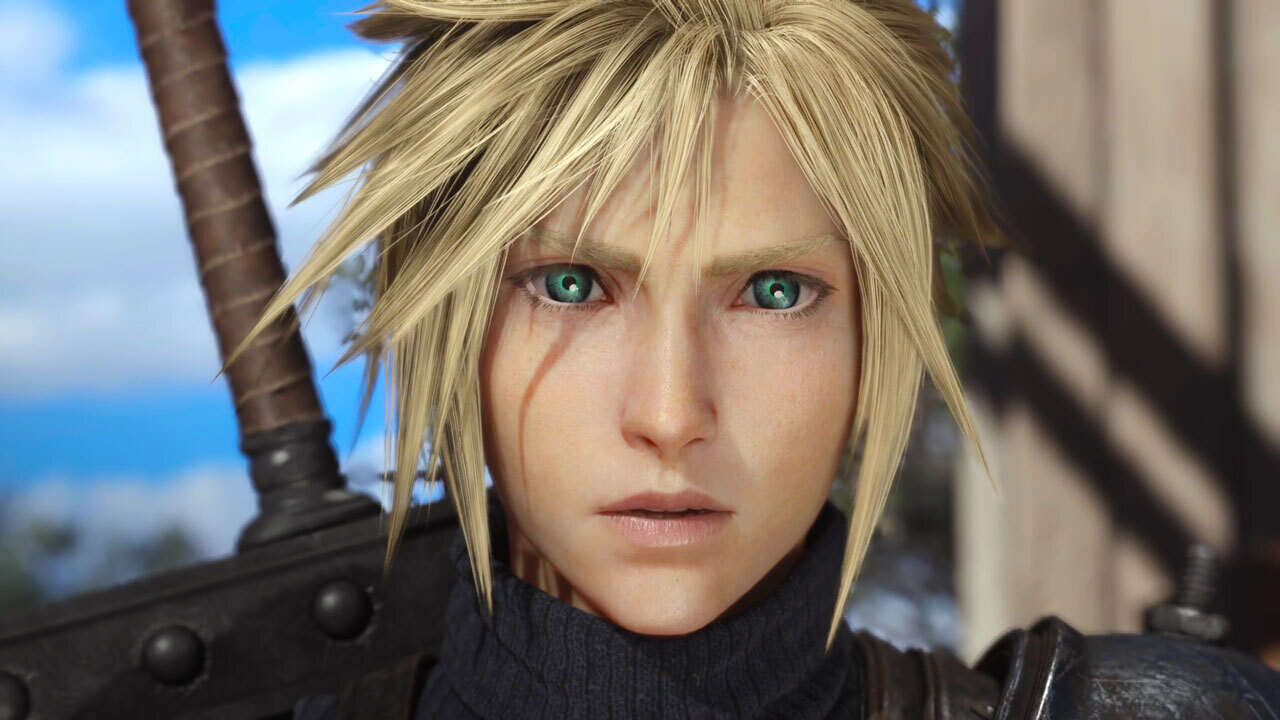With the help of a fellow covert revolutionary, Cloud and the gang vacate the premises just as Shinra’s goons raid the breezy town of Kalm. They slip out through an underground tunnel and step into the Grasslands, one of the several regions that makes up what I remember of Final Fantasy 7‘s overworld. As their eyes adjust to the sun’s blinding brightness, Aerith runs forth stunned at the sight of a vast, lush, and beautiful landscape full of life, unlike anything she’s ever seen from her time stuck in Midgar’s slums and city streets.
“Wow… Just look at it all… It’s so green. A living breathing planet. Even after everything we’ve done to it, it’s still going strong,” Aerith says. Not necessarily being pessimistic, Red XIII knows the planet’s beauty is only skin deep, replying, “It may look that way. But in reality, it’s barely hanging on.”
This is a revelatory moment for Final Fantasy 7 Rebirth and its characters. After reliving Cloud’s hazy memories of the tragedy at Nibelheim five years prior and enjoying a brief reprieve in Kalm, this is the game showcasing its scope and scale. A massive open environment ripe for exploration, a far cry from the corridors and alleyways of Midgar from Remake. And from the jump, Rebirth re-establishes its core message of environmental preservation to remind you that in chasing Sephiroth and fighting Shinra, these characters are striving to save their dying planet. It was my favorite moment from the four-hour preview demo I got to play because of how it captured the essence of Final Fantasy 7 in such a short scene.
In a conversation with Rebirth director Naoki Hamaguchi, he mentioned being able to depict its themes like the impact of Mako on everyday people in Final Fantasy 7’s world, saying, “This is something that perhaps was not so visually expressed in the original. But in Rebirth, we put a lot of effort into doing that. For example, the town of Kalm relies on Midgar for its source of Mako energy. So, when you go up to the clock tower, you’re able to see the pipes that lead to Midgar.”
Square Enix long-timer, Rebirth producer, and original Final Fantasy 7 director Yoshinori Kitase reflected on the time since the original. With regards to its environmental themes and real-world climate issues, he said, “They’re not something that have ceased existing. They have always been present and as they were 27 years ago, when we created and released the original. We transferred or translated these topics to fit the world of Final Fantasy 7, and this topic still remains relevant today.”
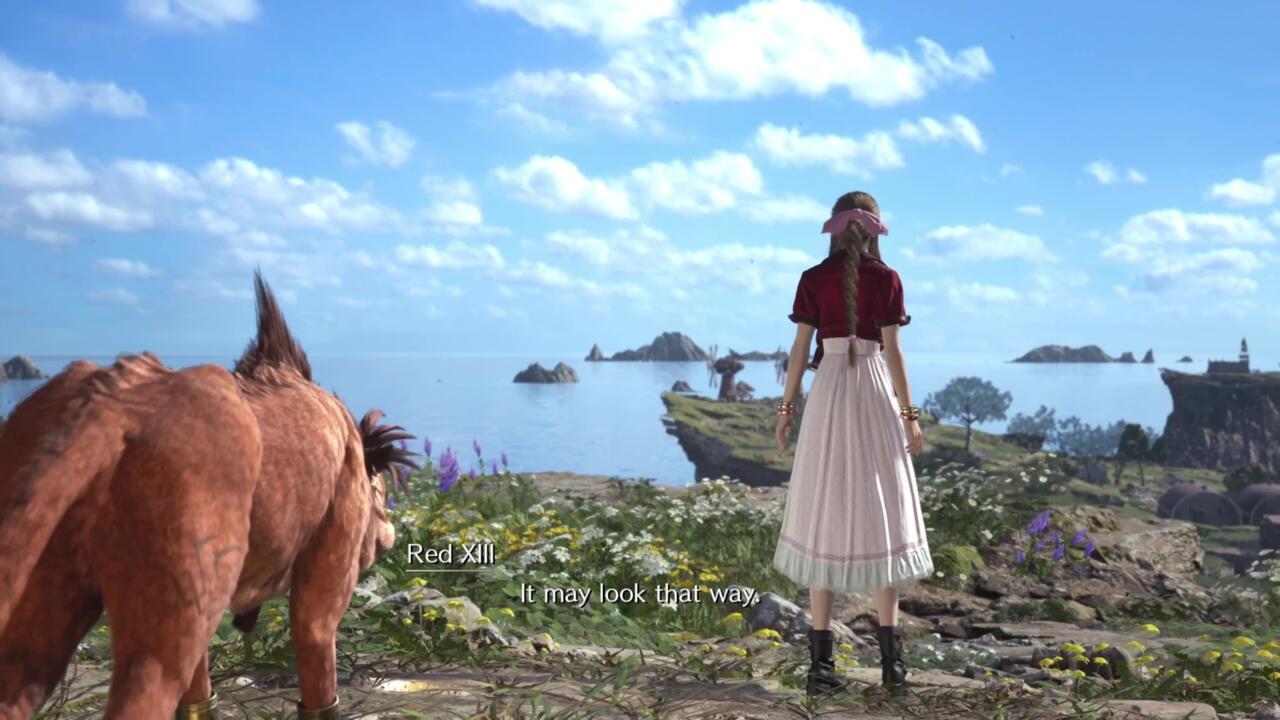
In this lengthy demo, there were several moments that either left a lasting impression or made me more curious about the direction Rebirth is taking Final Fantasy 7. The Grasslands is the first large-scale open zone you’ll spend time in, and poking around it unveiled a lot of seemingly traditional open-world conventions. Hell, when I just pulled up the in-game map, I was reminded of how daunting games of this nature have become. But I kept an open mind for the open world as I followed the main quest and took mental notes on side content worth checking out.
The main scenario led me to the marsh guarded by the great serpent Midgardsormr, but before even thinking about taking it on, I was required to get a Chocobo to navigate the waters. And just like in the original, I pulled up to the Chocobo ranch to wrangle one for myself. In that process, I got to meet the ranch owner and his grandkids, and they hinted at a deeper issue within the family that called back to Chocobo Sam from Remake–well, they’re struggling with the loss of a loved one. They eventually asked Cloud and company to round up some flowers halfway across the map as a favor, but what I found was a bittersweet little side story that showed me more of the Grasslands and also the human side of Rebirth.
Thus, I was introduced to Rebirth’s side-quest system. These are multi-step quest chains that have you going from one location to another and chasing down threads of objectives for the NPCs who populate the world. They’re scattered across a sprawling map and seem to go deeper than those of Remake. It’s up to you to take these on since many of them are posted on community noticeboards at different towns, and I was able to return to Kalm to check out a few of them–one of which was a request to chase down a valuable card that the town’s bartender lost. Along the way, I learned a bit about how the crew’s old bar, Seventh Heaven, actually had quite the reputation well outside of Sector 7. That was a nice little touch that enriched Final Fantasy 7’s world just a little more. The hope is that there are more side quests like this and that they use both gameplay variety and the narrative to connect you to the towns and their populations, even in small ways.
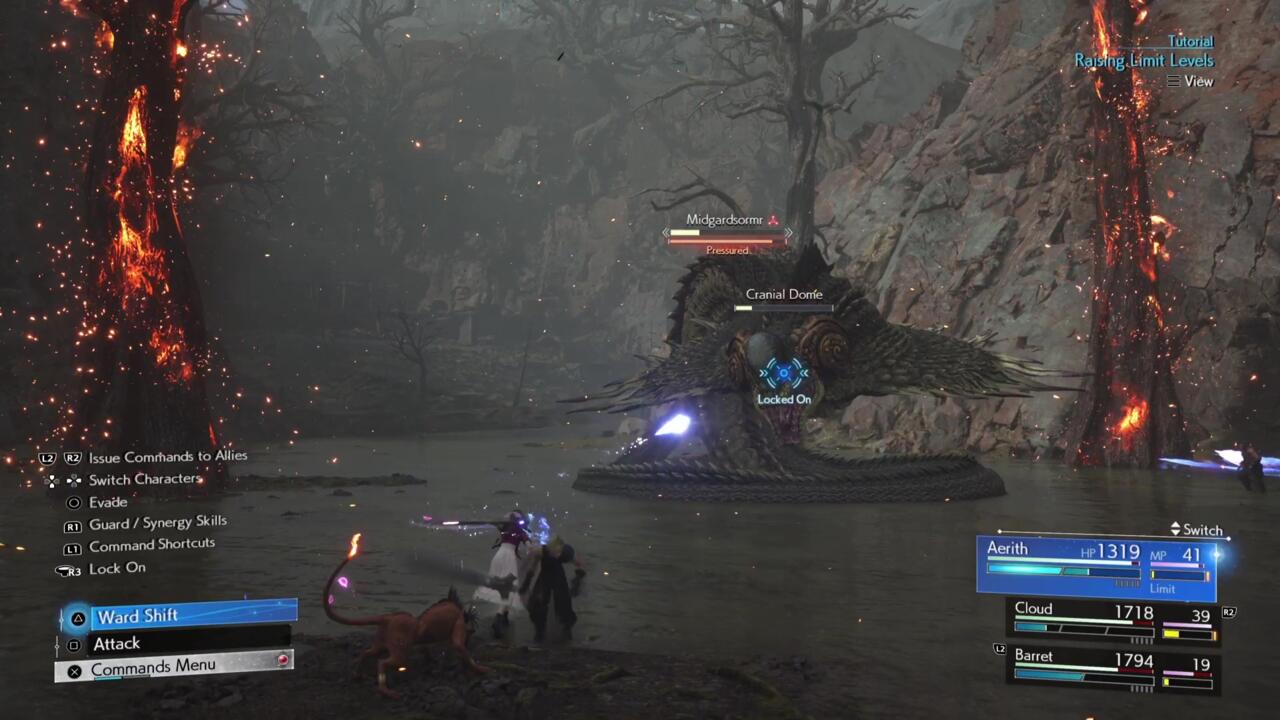
I asked Hamaguchi about how the team approached creating these more open environments and filling them with things to do, and he told me, “For the first year of our development, a lot of our discussion was focused on, ‘How much space can we devote to certain locations of the world? How big should it actually be, to a point where you have that feeling of being able to explore freely, but not be overwhelming or distracting from the overall experience?’ That was something we really took care to assess and through trial and error then building upon that.”
There’s another aspect to side-questing in Rebirth, which revolves around everyone’s favorite nerd, Chadley. As soon as you get your Chocobo, homeboy shows up to tell you about all the technological advancements he’s made off the back of Shinra–which I say makes him a worthy ally. What you find is that Rebirth’s open areas have Ubisoft-style towers, the kind that reveal more of the map and surrounding activities once activated. Part of me thought, “Ah, so it’s this kind of game.” But I think there’s enough fascinating context built around Final Fantasy 7’s world that can stave off the feeling of it being a worn open-world trope.
Under the guise of helping Chadley acquire data, you can discover several points of interest with various objectives and rewards. Lifesprings are spots with bountiful resources you’ll have to scan, which offer crafting materials and interesting codex entries about the region. Minibosses offer specific in-battle objectives you can clear in addition to simply defeating them for a hearty combat challenge. The Protorelic quest chain has you chasing down a silly bandit group in a series of battles, and the Divine Intel quests have you digging up relics that offer information on summons you fight in the combat simulator. Not everything is exciting in the moment-to-moment gameplay, but rarely did my deeds for townsfolks or Chadley feel like fetch quests or busywork.
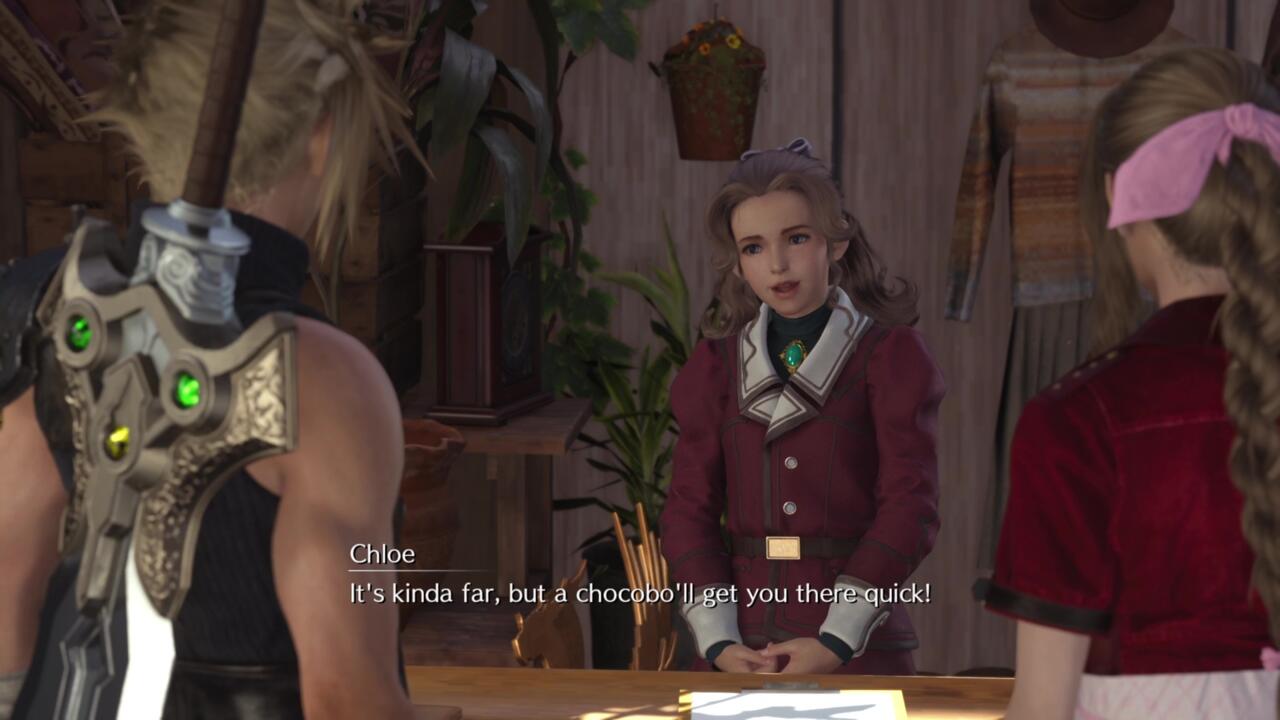
I wouldn’t say that I’m completely sold on Rebirth’s idea of open-world-like zones quite yet, but of course, that’ll take hours upon hours of discovery in the full game. From what I’ve seen thus far, it’s the synergy between the message of connecting you to the planet itself along with the people who embody it and the satisfaction of completing tasks from a gameplay perspective that elevate this structure. If it can maintain that level of quality and avoid the checklist fatigue that can creep into games of this style, I’d say the optional activities are worth seeking out. But here’s the kicker: Everything you do–whether they’re the side quests for folks around the world or Chadley’s requests–feeds into Cloud’s bond level with the party.
For example, that flower-chasing side quest for the Chocobo ranch’s family also raises your relationship level with Aerith–after all, it reminded her of her days as a flower girl in Midgar and was a sweet gesture for a struggling family. Something as small as responding properly to fellow party members in conversations can influence your relationship standing, which was shown during downtime in Kalm. I visited Barrett at the town bar and told him rounds are on me when we finish the job, and showed some enthusiasm for Aerith’s date idea of climbing the town’s clock tower, and these responses increased my bond with them. So, there’s this social sim element working its way into Final Fantasy 7 that seems to feed into a stronger party dynamic I’m excited to see play out.
This was a very intentional design choice according to Hamaguchi. He told me, “The main theme that we worked with is bonds between characters. Using this theme, it’s also how we have designed the battles. The battlefield itself was created with the theme in mind. The entire game is structured around this theme. And so in that way, characters throughout the story will strengthen their relationships.”
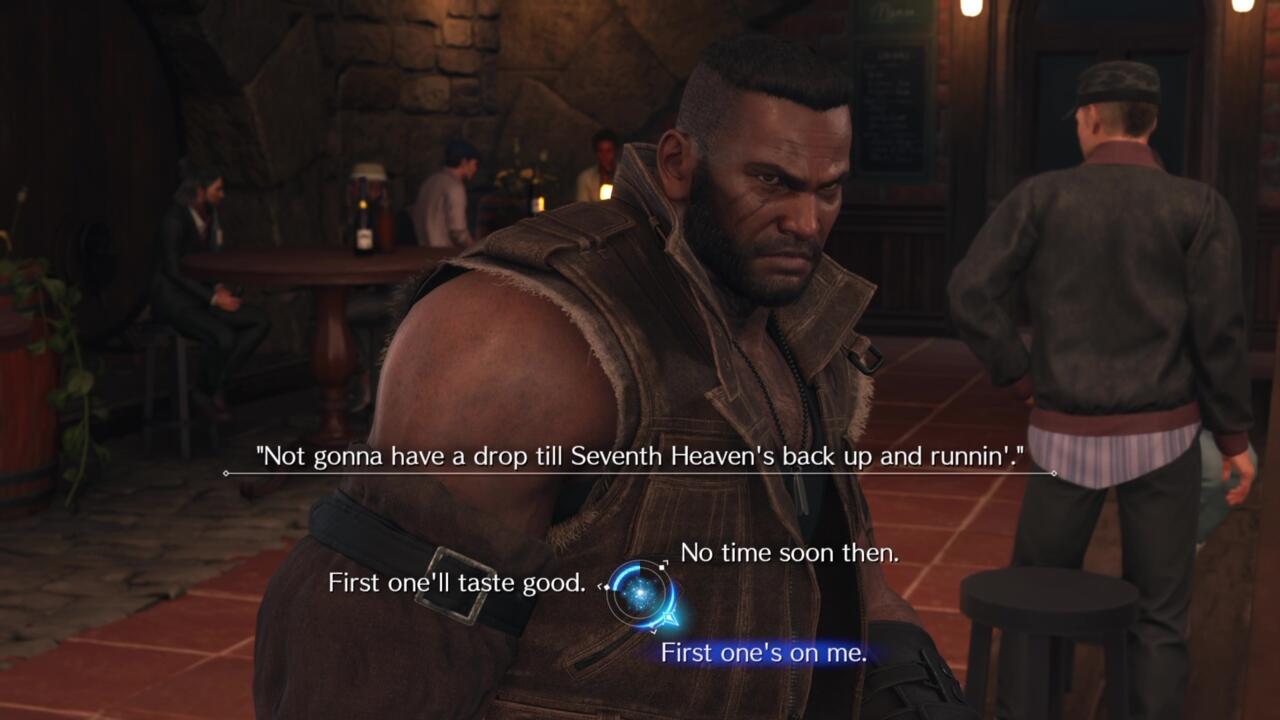
That design idea comes through in the new Folios progression system, and it really does seem like the battlefield facilitates these character bonds in tangible ways. It’s almost expected of RPGs to make the power of friendship manifest in gameplay form, and Rebirth has its own take on it. Side quests consistently reward you with Party XP to increase Party Level, which is a separate progression track specifically to advance Folios–think of it as a Sphere Grid full of perks and abilities centered around partner attacks and synergies between specific party members. Then you unlock skills within each character’s Folio using a pool of SP, which increases based on their weapon upgrades, introducing more layers to Rebirth’s RPG vision.
There’s a deep interconnectedness between many of Rebirth’s systems. Bonds, party level, and weapon upgrades all feed into getting demonstrably stronger in battle, which is achieved by taking on side content, much of which is designed to connect you to the world and its characters. Just from this preview demo, it seems like Rebirth addresses the concerns one might feel from open-world fatigue and justifies its design decisions by weaving them all together meaningfully. It’s the sort of depth that genuinely affects how you carry the team in combat, because many of these fights were not easy.
The core tenets of Remake’s combat system return, which has me excited to engage with its unique brand of action-RPG all over again. Landing attacks in real-time, building up ATB to cast spells or pull off special abilities all while juggling every character’s distinct fighting style gives you so much to chew on. Red XIII joins the fight, and he can juggle enemies with swift claw attacks, then turn defense into high-powered offense with his Vengeance mode stance, then cast the wonderfully destructive Stardust Ray magic spell. I was as eager as ever to get back to it and shake off the rust since finishing Intergrade about two years ago. With Rebirth’s additional layers like Synergy attacks and passive perks you get from Folios, these new systems give you more to wield to your advantage in addition to building your party through the returning Materia system. There was already an impressive depth to the combat system in Remake that truly surfaced when facing tougher enemies. And just from this short preview, Rebirth showed that it’s stepping things up.

Exploring the Grasslands was a bit light on challenging combat scenarios until I ran into a high-level side-quest target or jumped into Chadley’s revamped combat simulator to fight Titan. These were insurmountable when going straight to them without thinking about my party’s progression and builds. And when it came to the main story’s questline where I had to make it past the swamp god Midgardsormr, it was extremely difficult, or damn near impossible when trying to critical-path my way forward. But after spending time to level up and grasp the deeper systems, the boss fight didn’t feel unconquerable even though it still required a ton of effort to defeat. I took this as the game’s way of pushing back on me as the player and telling me to spend more time in the world to level up and get stronger, while also engaging with the side activities. I suppose it’s one of the several ways Rebirth encourages you to take your time and experience everything else around it, and it’s welcome.
Without giving too much away, a cutscene followed my victory over the swamp serpent, and I have to admit, all the storytelling up to this point had been giving many more questions than answers. As seen in Remake (and what I know from the original), something is woefully off about Cloud’s memory. The lines between what’s real and what’s not are continually blurred in seemingly innocuous ways. Blanks are left unfilled as the imagery that cleverly harkens back to the original game blends with the new direction Rebirth is taking Final Fantasy 7. For all its new, smartly interwoven systems and open-world pizazz, the most intriguing thing about Rebirth is what it has to say about legacy and the influential story it’s based on.
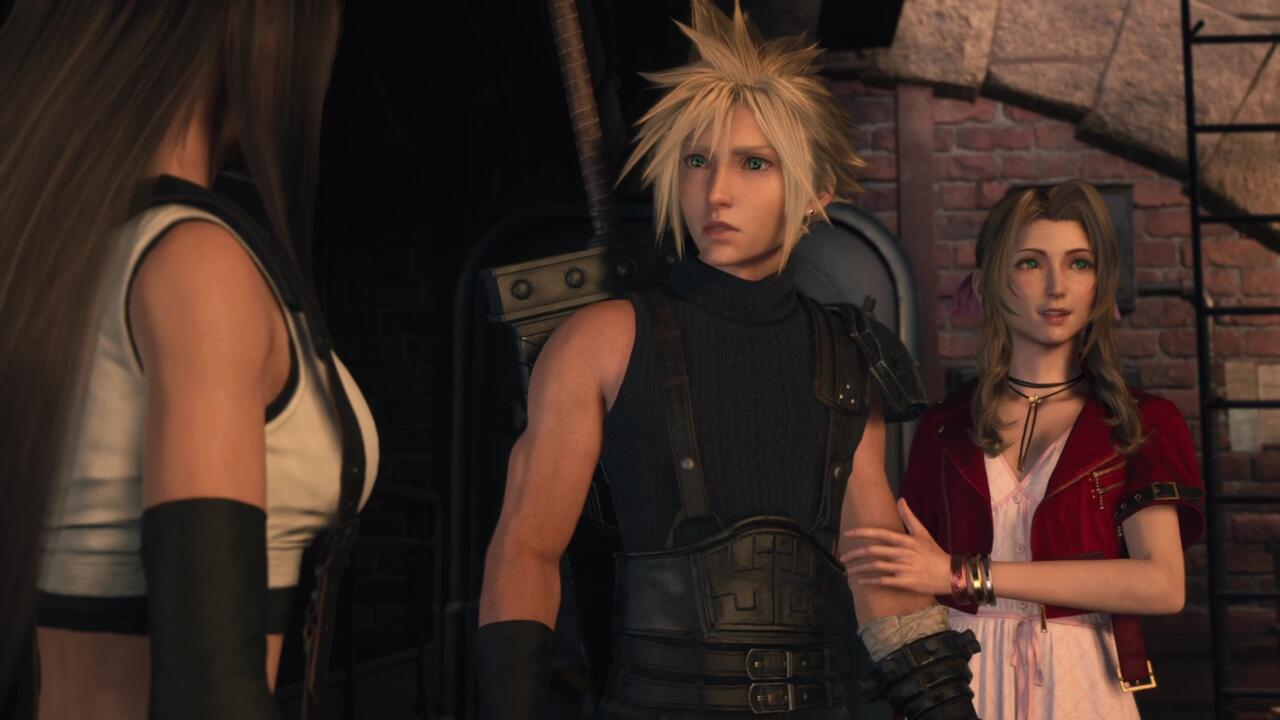
I think back to Final Fantasy 7 often and ponder its legacy, especially in the wake of this modern reimagining. Just like many fellow fans, I too get caught up in the character-driven drama and heartbreaking moments. But this has always been a game about remembering who holds the power, who exploits our world, who exploits the powerless, and who inflicts harm on the people struggling to just survive. Part of the joy of Final Fantasy is always the whimsical journey you go on with characters you grow to love, but rarely does that overshadow the fact that this series, and Final Fantasy 7 in particular, will always be embedded in what we see in our real world.
The extent to which Rebirth expands on the series’ ongoing themes is the kind of thing that’ll only be answered when the full game is out. We won’t have to wait long since Final Fantasy 7 Rebirth is set to launch on February 29 exclusively for PlayStation 5.

